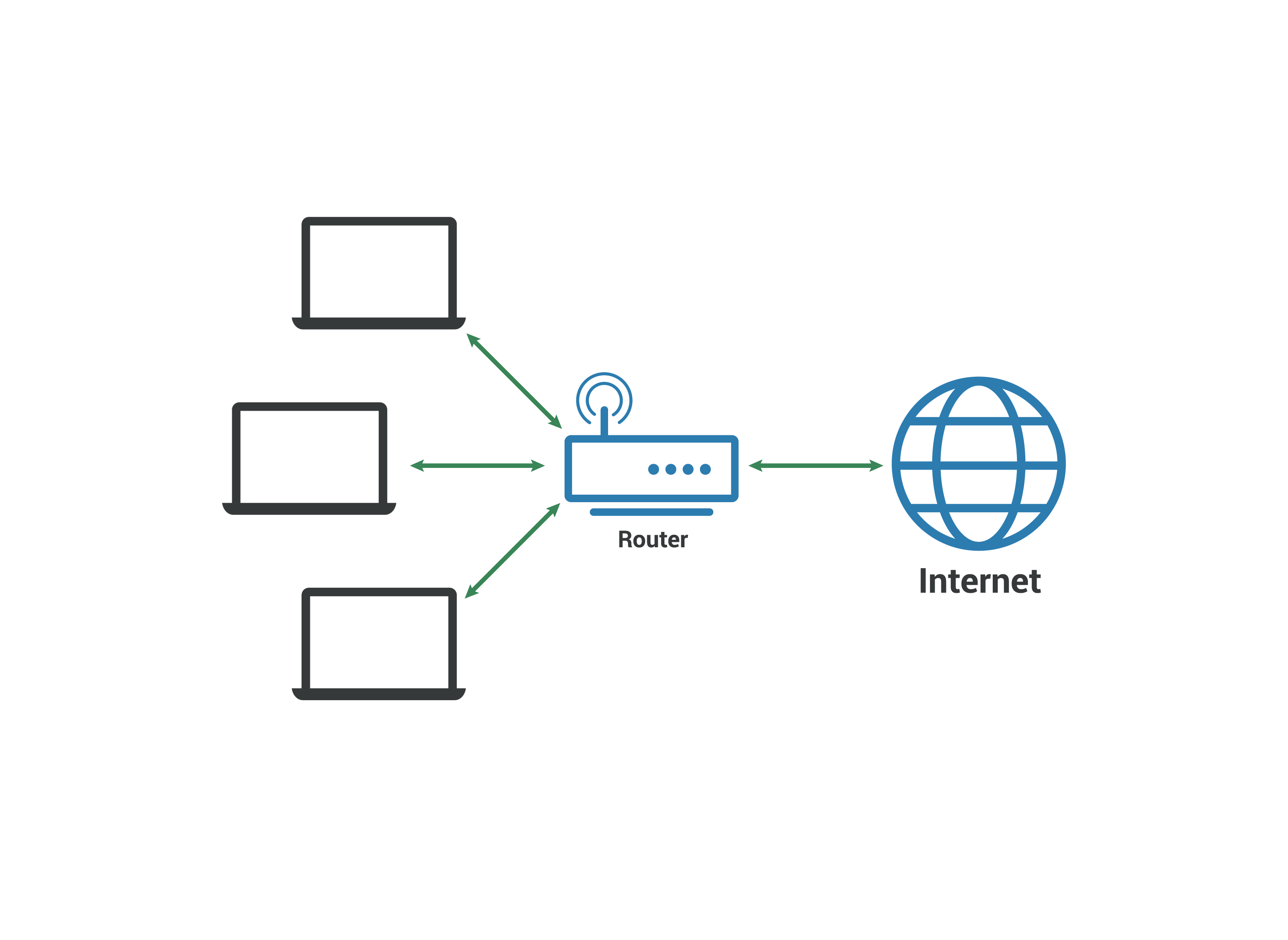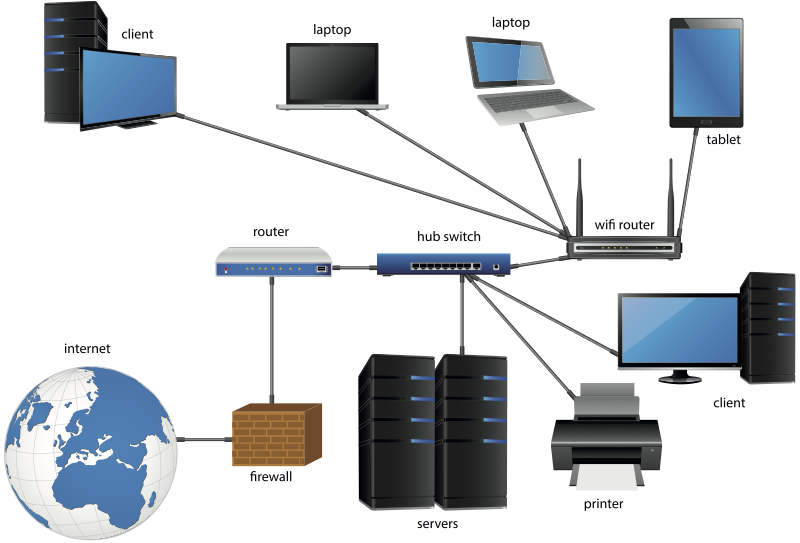Local area networks (LANs) might be one of our favorite Internet terms because it says exactly what it is without needing a jargon-to-English dictionary. And unlike many VoIP terms, we’ve all encountered LANs before regardless of the depths of our Internet knowledge. It is, quite simply, the network covering a direct and finite area.
What Is a Local Area Network?
The LAN is a private network that allows devices on it to connect to each other and share data. It covers a specific area through at least one router. The exact size of that area may vary from a house to an office to an entire office building. All devices connected to the LAN share a network connection.
There are a couple standard pieces of hardware found in any LAN:
- Modem: This enables an Internet connection from your ISP.
- Router: This sets up the local network and creates WiFi from the modem’s Internet connection. Consider it the border between your private network and public cyberspace—aka where the firewall lives. Devices within the LAN can connect to each other and share data (hence the name: routing data) without necessarily needing an Internet connection.

Fun fact: LANs predate the Internet because the primary function is to connect devices for data sharing—technically no Internet connection is required.
A household LAN likely needs a single router. Larger networks can expand range through additional routers and switches to connect as many devices as necessary, even bringing in a dedicated server. It’s the same functionality across the board, just scaled up as necessary. Business-grade hardware usually has beefed-up security protocols to better protect the larger network.
Example of a Local Area Network
Take an office building, for example. You can send files from your computer to another device like a printer or fax machine without having to directly connect them.
There are a few expansions on LANs:
- Wide area network (WAN): Several LANs connected over a larger area with no restrictions on how far that area extends.
- Metropolitan area network: A group of connected LANs in a single metropolitan area, like a city.
- Campus area network (CAN): A group of connected LANs across a school campus.
For example, a school administrative building will have its own LAN for that building alone. A separate classroom building will also have its own LAN. But as part of the CAN, the two LANs can connect to each other to essentially be on the same network.

How to Connect Computers via LAN
There are two ways to connect a device to the LAN: Ethernet and WiFi.
- Ethernet, or a wired connection, requires an Ethernet cable to physically plug in to the router or switch. If a device can’t connect via WiFi or the signal is spotty, a wired connection will provide solid access to the network. If this sounds familiar, it should! VoIP phones are connected and powered over Ethernet. local area network
- WiFi, or a wireless connection, picks up the signal from the router without wires getting in the way.
Setting up the LAN is the same as setting up your WiFi at home. You just plug in the modem and router, name your network (SSID), and set a password. Any wirelessly connected devices just need the password to connect.

